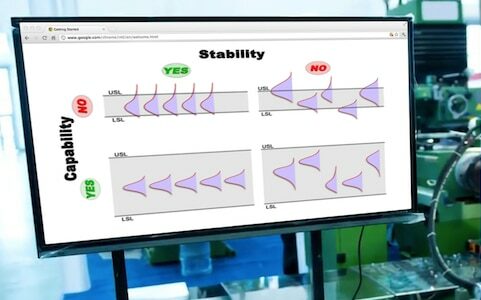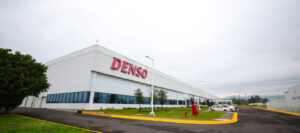Nothing and everything. Though they are not directly linked, statistician and SPC expert Steven Wachs cautions that without evidence of process stability, capability data is useless.
Process Stability and Process Capability are both extremely important aspects of any manufacturing process. Often the concepts behind process stability and process capability and the relationship between them are misunderstood. This article attempts to clarify both ideas and the relationship between them.
Defining Process Stability and Process Capability
Process Stability refers to the consistency of the process with respect to important process characteristics such as the average value of a key dimension or the variation in that key dimension. If the process behaves consistently over time, then we say that the process is stable or in control.
The graphic on the left below illustrates a stable process. The process distribution remains consistent over time.
The graphic on the right illustrates an unstable process. The process distribution average is shifting over time.
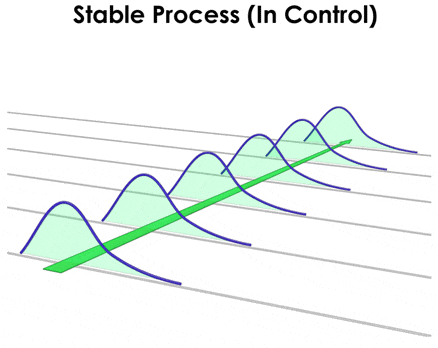 |
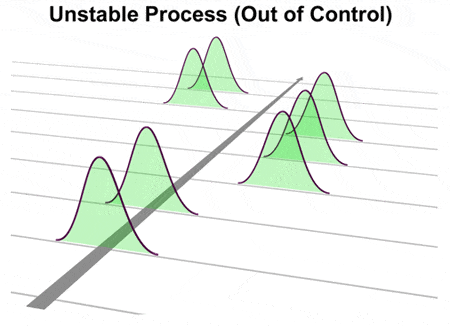 |
Statistical Process Control Charts are utilized to determine if the process is stable or not. Some charts are used to assess the stability of the process location (for example, xbar charts that monitor the process average), other charts are used to assess the stability of the process variation (for example, range or standard deviation charts).
Process Capability is a measure of the ability of the process to meet specifications. It tells us how good the individual parts are.
There are several methods to measure process capability including an estimation of the ppm (defective parts per million). Click here for an article on how to calculate process capability. Capability indices such as Cp, Cpk, Pp, Ppk are very popular; however, trying to summarize the capability via a single index is often misleading because key information about the process is lost. The issues with capability indices will be discussed in a future article.
An Example: Nonfat Cookies
To make sure we understand the difference between process stability and process capability, consider my wife’s attempts to bake nonfat cookies. For years, she has been experimenting with different recipes with the objective of producing a great tasting non-fat cookie with a reasonable texture. Unfortunately, she has not yet succeeded. While her results have not been capable (they are out of spec), she has been very consistent-consistently bad. Yet, I know what to expect from her nonfat cookies so I can say that the process is at least stable or in control.
Process Stability vs. Process Capability
Process stability and process capability are different ideas and there is no inherent relationship between them. That is, knowing that the process is capable (or not capable) tells us nothing about the process stability. Furthermore, knowing if the process is stable (or not) tells us nothing about the process capability. The following graphic illustrates all four possible scenarios. The graphic shows the distribution of individual measurements over time (left to right) compared to the upper and lower specification limits.
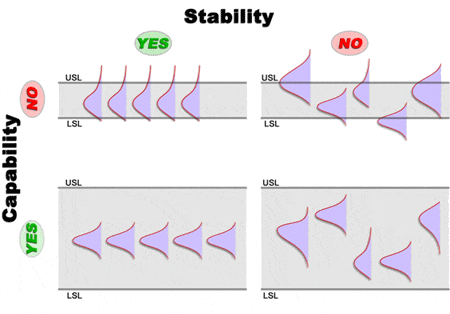
- In the upper left quadrant, the process is stable (in control) but is not capable of meeting specifications. If we viewed this process with a control chart, it would illustrate a stable process and we would have no idea that it’s not capable.
- In the lower left quadrant, the process is stable and capable.
- In the lower right quadrant, the process is not stable, although we might say that it is capable of meeting specification (Note: This is not really the correct interpretation as will be discussed shortly.)
- In the upper right quadrant, the process is neither stable nor capable.
The One Link Between Stability and Capability
While there is no direct relationship between process stability and process capability, there is an important connection: Process capability assessment should only be performed after first demonstrating process stability.
As discussed earlier, process capability is an assessment of the ability to meet specification. However, if the process is unstable, we cannot predict its capability. Any estimate of process capability we make depends entirely on where the process happens to be when we collect the data. Suppose the process average is shifting about over time. An estimate of the process capability is only reflective of where the process is at that point in time … not where it may go next.
Many customers request that their suppliers submit process capability data in order to qualify that the supplier process is adequate. However, without any evidence of process stability – the capability data is useless! It is not enough to know that a process is capable at some point in time. The process must achieve this capability consistently- and that’s where process stability comes into play.

